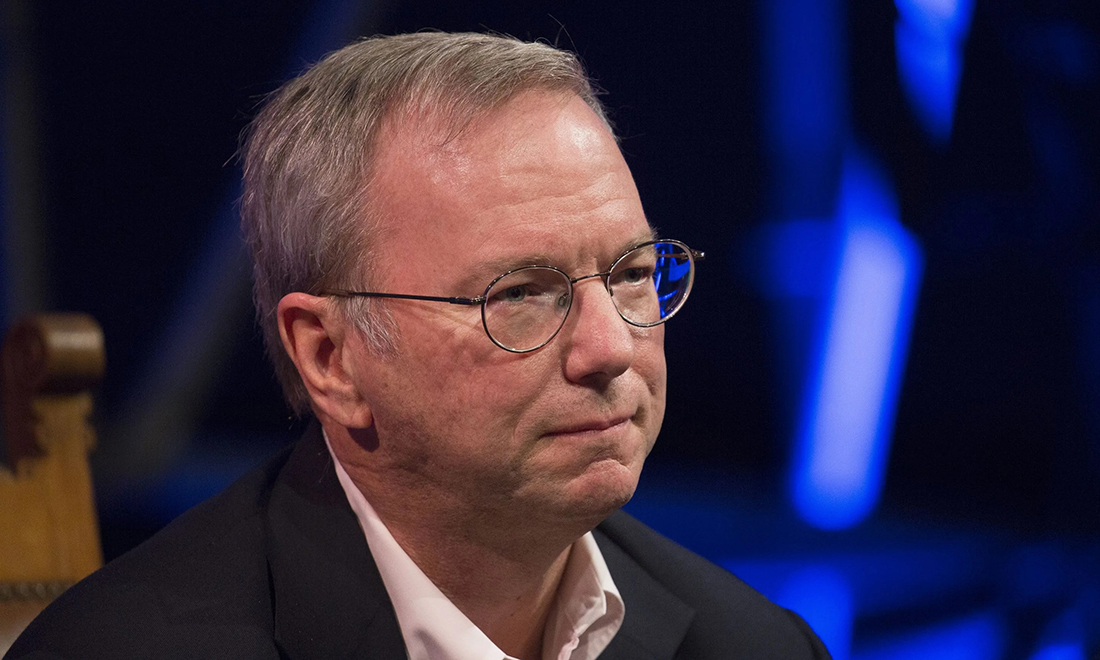
支持加强对人工智能监管的人有一长串的担忧和风险点来支持他们的观点,短期威胁包括传播看起来相当可信的错误信息,更遥远的风险则关系到人类的生死存亡——超人工智能接管人类(或者用埃隆·马斯克的话来说是“走向终结者”)。相对中期的担忧是,人工智能将成为近代史上颠覆职场的最大因素之一,今年3月,据高盛计算,这项技术可能很快取代美国和欧洲相当于3亿个工作岗位。但谷歌前首席执行官兼执行主席埃里克•施密特表示,我们的工作被人工智能夺走的风险,可能会被另一个困扰社会的生存性风险所削弱:发达国家迅速下降的出生率。
施密特周三在伦敦《华尔街日报》(Wall Street Journal)首席执行官理事会峰会上说:“事实是,我们没有足够的孩子出生,而且我们已经很长时间没有足够的孩子出生了,甚至出现了人口危机,我这个年龄的人要由更年轻的一代照顾。”
施密特反驳了新技术会不可避免地造成破坏并导致大面积失业的“说法”。他说,就人工智能而言,净收益可能是正面的,因为它提高了效率,而且有能力取代那些在不断萎缩的劳动力市场中已经越来越难以填补的岗位空缺。
在美国,由于新生儿出生数量的减少,历来紧张的劳动力市场在未来几十年可能会变得更加紧张。除了2021年疫情引发的“婴儿潮”之外,自2000年代中期以来,美国的生育率——每位女性一生中预计生育的孩子数量——一直在稳步下降,其中2020年的降幅达4%,创下历史纪录。
已婚夫妇对财务状况、沉重的学生贷款和信用卡债务的担忧,以及对个人事业更加看重,是美国新生儿减少的部分原因(发达国家出生率更低的另一个原因似乎仅仅是出于个人选择)。欧洲和东亚的发达经济体也在发生类似的变化,但这种趋势可能在未来几年产生严重的经济后果。随着婴儿潮一代的退休人数逐年增加,没有足够多的年轻人来替代年迈的劳动力,可能会在未来几十年内导致人口和劳动力危机。
“总的来说,所有的人口统计数据都表明,相对于工作岗位数量,劳动力将出现短缺。至少在未来30年里,将出现就业岗位太多而人口不足的情况。”
各国提出了多种政策,以避免人口危机的最坏影响。中国最近宣布了全面的激励措施和政策,以扭转人口下降的趋势,包括提升孕产妇保健服务,部分省份可提供30天带薪婚假,甚至不鼓励堕胎。许多国家也开始面向海外寻找劳动力,比如过去反对将过多外国员工与本国劳动力混杂在一起的日本也在近年来放宽了入境要求。
美国的人口数量在经历了2021年几乎没有变化之后,去年有所增长,主要原因是移民的增加。包括谷歌和Alphabet现任首席执行官、印度出生的桑达尔·皮查伊在内的几位商界领袖一直在呼吁,美国应该欢迎更多的移民来补充其劳动力队伍。
人工智能或许可以在美国的劳动力短缺中发挥至关重要的作用,特别是用于填补在疫情早期“大辞职潮”期间由于倦怠和不安全的工作条件辞职的人的岗位。历史表明,技术往往会自动填补工人短缺造成的空缺。麻省理工学院2021年的一项研究发现,在不同国家,在使用机器人和自动化设备的各项因素中,老龄化占35%。作者还认为,德国、韩国和日本等快速老龄化且同时在机器人产业投入巨资的国家的劳动力市场表现比美国好。
几年前,就有公司开始用人工智能和自动化技术来从事卡车司机和调酒师的工作,因为疫情期间很多人都对这些岗位敬而远之。然而,最近人工智能的快速增长带来的威胁可能更加直接也更为普遍,正如ChatGPT的创建者OpenAI今年3月的一项研究发现,80%的美国工人可能将面临至少十分之一的工作会受到人工智能的影响。人工智能给工作带来的风险是OpenAI首席执行官萨姆·奥特曼在本月早些时候在国会作证时敦促国会加强人工智能监管的原因之一。
施密特认为,人工智能最终将成为提高工作效率的工具,虽然它整体看来会对劳动力产生积极影响,但短期内造成的失业或许无法避免。
“最终会出现的情况是,在座各位,无论是在商界还是其他领域,你们真正关心的是效率。最终会有大量的工作流失,对吧?一些工作被创造出来,一些工作消失了。”(财富中文网)
译者:Agatha
支持加强对人工智能监管的人有一长串的担忧和风险点来支持他们的观点,短期威胁包括传播看起来相当可信的错误信息,更遥远的风险则关系到人类的生死存亡——超人工智能接管人类(或者用埃隆·马斯克的话来说是“走向终结者”)。相对中期的担忧是,人工智能将成为近代史上颠覆职场的最大因素之一,今年3月,据高盛计算,这项技术可能很快取代美国和欧洲相当于3亿个工作岗位。但谷歌前首席执行官兼执行主席埃里克•施密特表示,我们的工作被人工智能夺走的风险,可能会被另一个困扰社会的生存性风险所削弱:发达国家迅速下降的出生率。
施密特周三在伦敦《华尔街日报》(Wall Street Journal)首席执行官理事会峰会上说:“事实是,我们没有足够的孩子出生,而且我们已经很长时间没有足够的孩子出生了,甚至出现了人口危机,我这个年龄的人要由更年轻的一代照顾。”
施密特反驳了新技术会不可避免地造成破坏并导致大面积失业的“说法”。他说,就人工智能而言,净收益可能是正面的,因为它提高了效率,而且有能力取代那些在不断萎缩的劳动力市场中已经越来越难以填补的岗位空缺。
在美国,由于新生儿出生数量的减少,历来紧张的劳动力市场在未来几十年可能会变得更加紧张。除了2021年疫情引发的“婴儿潮”之外,自2000年代中期以来,美国的生育率——每位女性一生中预计生育的孩子数量——一直在稳步下降,其中2020年的降幅达4%,创下历史纪录。
已婚夫妇对财务状况、沉重的学生贷款和信用卡债务的担忧,以及对个人事业更加看重,是美国新生儿减少的部分原因(发达国家出生率更低的另一个原因似乎仅仅是出于个人选择)。欧洲和东亚的发达经济体也在发生类似的变化,但这种趋势可能在未来几年产生严重的经济后果。随着婴儿潮一代的退休人数逐年增加,没有足够多的年轻人来替代年迈的劳动力,可能会在未来几十年内导致人口和劳动力危机。
“总的来说,所有的人口统计数据都表明,相对于工作岗位数量,劳动力将出现短缺。至少在未来30年里,将出现就业岗位太多而人口不足的情况。”
各国提出了多种政策,以避免人口危机的最坏影响。中国最近宣布了全面的激励措施和政策,以扭转人口下降的趋势,包括提升孕产妇保健服务,部分省份可提供30天带薪婚假,甚至不鼓励堕胎。许多国家也开始面向海外寻找劳动力,比如过去反对将过多外国员工与本国劳动力混杂在一起的日本也在近年来放宽了入境要求。
美国的人口数量在经历了2021年几乎没有变化之后,去年有所增长,主要原因是移民的增加。包括谷歌和Alphabet现任首席执行官、印度出生的桑达尔·皮查伊在内的几位商界领袖一直在呼吁,美国应该欢迎更多的移民来补充其劳动力队伍。
人工智能或许可以在美国的劳动力短缺中发挥至关重要的作用,特别是用于填补在疫情早期“大辞职潮”期间由于倦怠和不安全的工作条件辞职的人的岗位。历史表明,技术往往会自动填补工人短缺造成的空缺。麻省理工学院2021年的一项研究发现,在不同国家,在使用机器人和自动化设备的各项因素中,老龄化占35%。作者还认为,德国、韩国和日本等快速老龄化且同时在机器人产业投入巨资的国家的劳动力市场表现比美国好。
几年前,就有公司开始用人工智能和自动化技术来从事卡车司机和调酒师的工作,因为疫情期间很多人都对这些岗位敬而远之。然而,最近人工智能的快速增长带来的威胁可能更加直接也更为普遍,正如ChatGPT的创建者OpenAI今年3月的一项研究发现,80%的美国工人可能将面临至少十分之一的工作会受到人工智能的影响。人工智能给工作带来的风险是OpenAI首席执行官萨姆·奥特曼在本月早些时候在国会作证时敦促国会加强人工智能监管的原因之一。
施密特认为,人工智能最终将成为提高工作效率的工具,虽然它整体看来会对劳动力产生积极影响,但短期内造成的失业或许无法避免。
“最终会出现的情况是,在座各位,无论是在商界还是其他领域,你们真正关心的是效率。最终会有大量的工作流失,对吧?一些工作被创造出来,一些工作消失了。”(财富中文网)
译者:Agatha
Advocates of stronger regulation of artificial intelligence have a long list of concerns and possible dangers backing up their argument, from short-term threats such as spreading believable misinformation to more existential far-off risks of superintelligent A.I. taking over humanity (or “going Terminator,” in Elon Musk’s words). A more medium-term fear is that A.I. will be one of the biggest job disrupters in recent history, with Goldman Sachs calculating in March the technology could soon replace the equivalent of 300 million jobs in the U.S. and Europe. But the peril of losing our jobs to A.I. could be undermined by another existential risk afflicting society, says former Google CEO and executive chairman Eric Schmidt: the developed world’s rapidly declining birth rate.
“Here are the facts. We are not having enough children, and we have not been having enough children for long enough that there is a demographic crisis where people who are my age are going to be taken care of by younger generations,” Schmidt said at the Wall Street Journal’s CEO Council Summit in London Wednesday.
Schmidt pushed back against the “narrative” that new technologies are inevitably going to cause disruption and lead to widespread job loss, saying that when it comes to A.I., the net benefit will likely be positive because of enhanced efficiency and the technology’s ability to replace professions that are already getting harder to fill in a shrinking labor market.
In the U.S., a historically tight labor market could become even tighter in the coming decades as a result of fewer children being born. Aside from a pandemic-induced “baby bump” in 2021, U.S. fertility rates—the number of children each woman would be expected to have in her lifetime—has been on a mostly steady decline since the mid-2000s, including a record-breaking 4% drop in 2020.
Couples’ concerns about their finances, crushing student loan and credit card debt, and a greater focus on career are some of the reasons Americans are having fewer kids (another is that in more developed countries, the birth rate seems to be lower just out of choice alone). Similar shifts are happening in developed economies in Europe and East Asia, but the trend might have serious economic consequences in the years ahead. With baby boomers retiring in higher numbers every year, the dearth of young people to replace an aging workforce could lead to a demographic and labor crisis within the next few decades.
“In aggregate, all the demographics say there’s going to be a shortage of humans for jobs. Literally too many jobs and not enough people for at least the next 30 years,” Schmidt said.
Countries have proposed a number of policies to stave off the worst effects of a demographic crisis. China recently announced sweeping measures and incentives to reverse its population decline, including enhancing maternal health care services, granting 30 days of paid marriage leave in some provinces, and even discouraging abortions. Many countries are also looking overseas for workers, such as Japan—historically opposed to mixing up its labor force with too many foreign staff—which has in recent years loosened its entry requirements.
In the U.S., the population grew last year after almost flatlining in 2021, largely because of increased immigration. Several business leaders—including Google and Alphabet’s current CEO, India-born Sundar Pichai—have long argued that the U.S. should welcome more migrants to fill out its labor ranks.
I. might also have a crucial part to play in the country’s labor force struggles, especially for jobs that workers were already walking away from during the early pandemic’s Great Resignation owing to burnout and unsafe working conditions. History shows that technology tends to automatically fill the gaps created by worker shortages. A 2021 MIT study found that aging accounted for 35% of the adoption of robots and automation in different countries. The authors also argued that fast-aging countries that also invested heavily in their robotics industries such as Germany, South Korea, and Japan were seeing better labor market outcomes than the U.S.
Companies started tapping A.I. and automation technology years ago for jobs like truck driving and bartending, professions that many workers willingly walked away from during the pandemic. However, the recent pace of A.I. growth threatens to be far more immediate and pervasive, as a March study by ChatGPT creator OpenAI found that 80% of U.S. workers could have at least 10% of their jobs impacted by A.I. The risk A.I. poses to jobs was one of the reasons OpenAI CEO Sam Altman urged Congress to regulate A.I. during his testimony earlier this month.
Schmidt argued that A.I. would eventually become a tool for efficiency in the workforce, but while it may end up as a net-positive for the labor force, job losses in the near term might be inevitable.
“What really happens is that people like yourselves, in the business community and so forth, you’re about efficiency. Ultimately there will be lots of job conflagration, right? Some jobs are created, some jobs are lost.”






